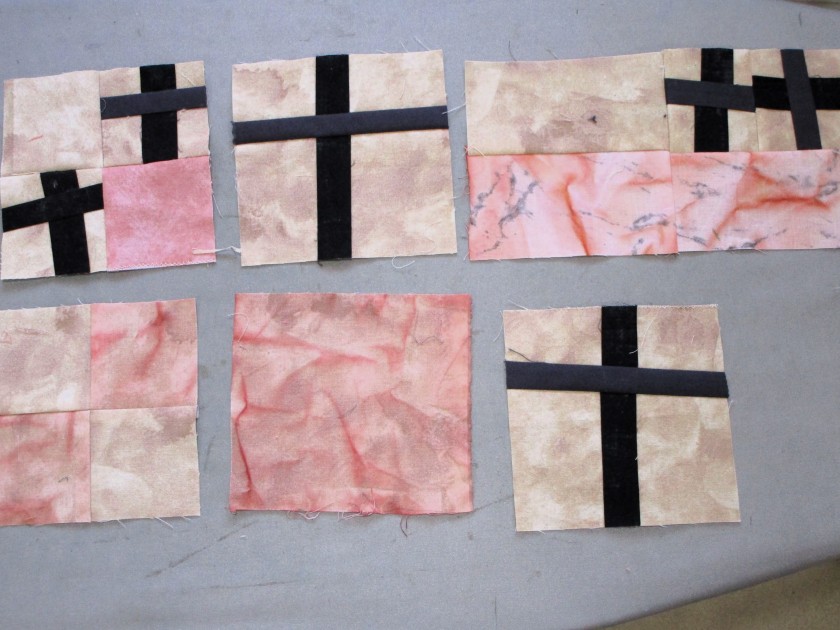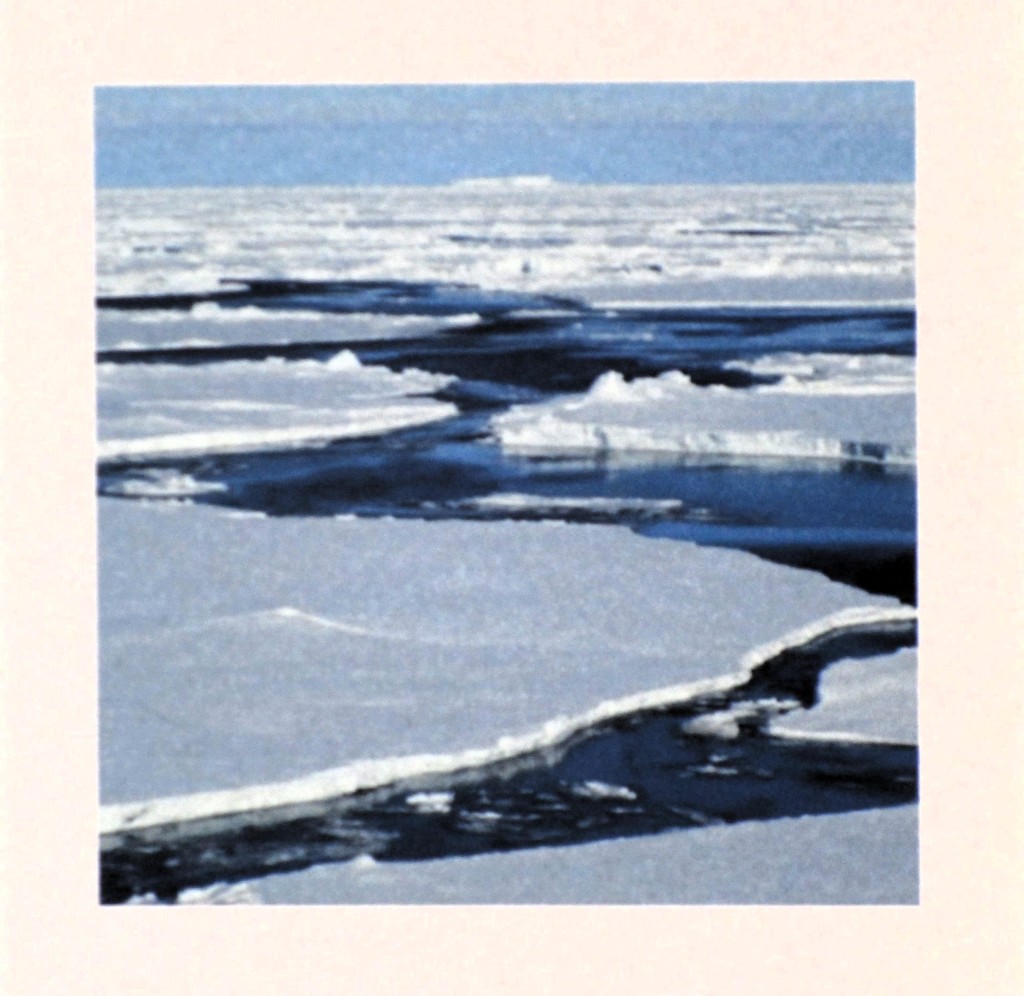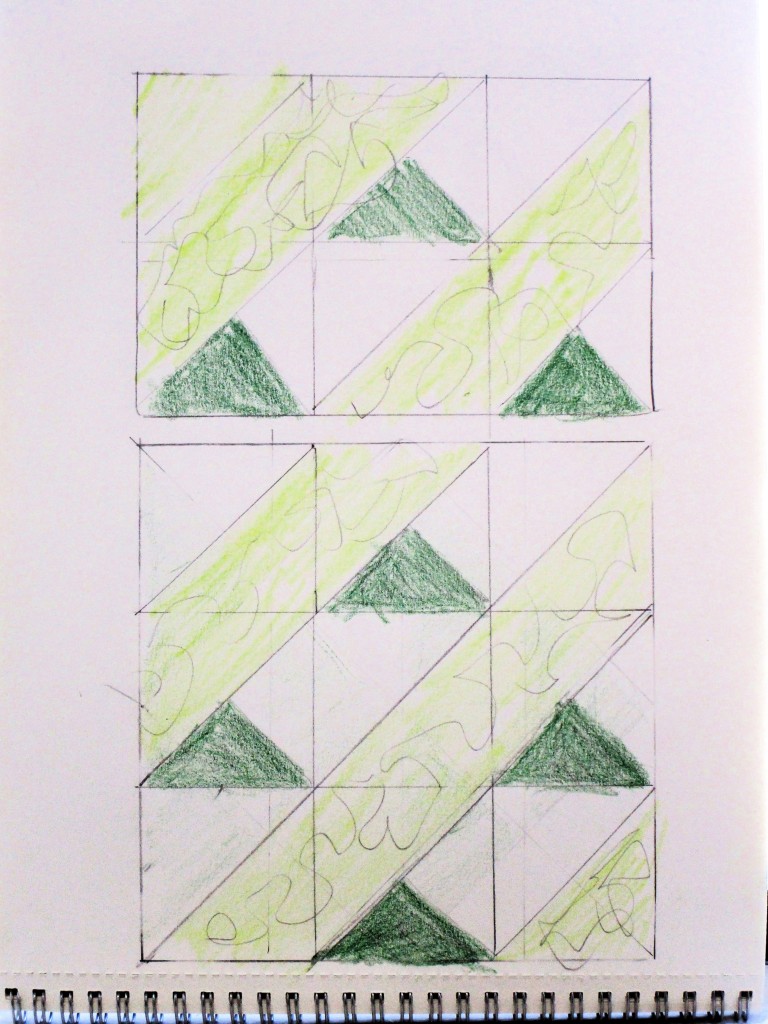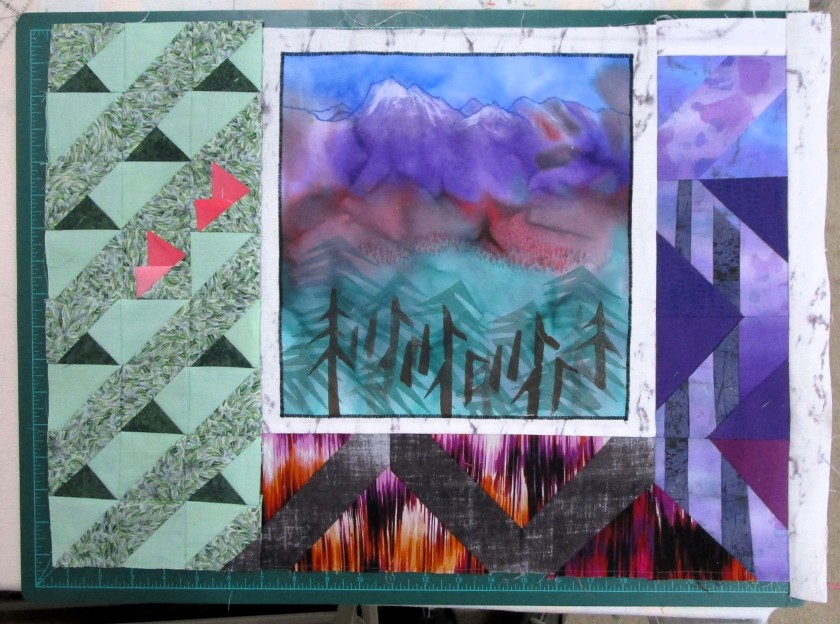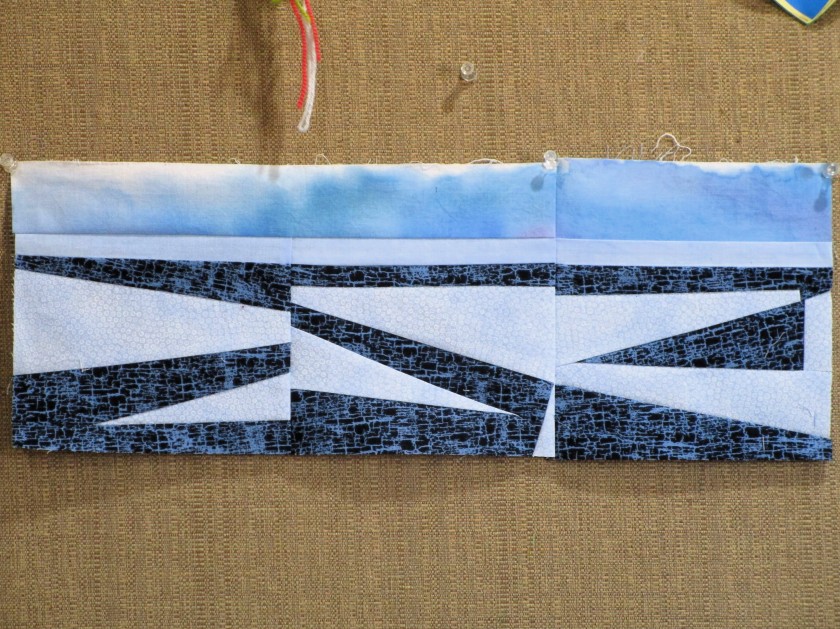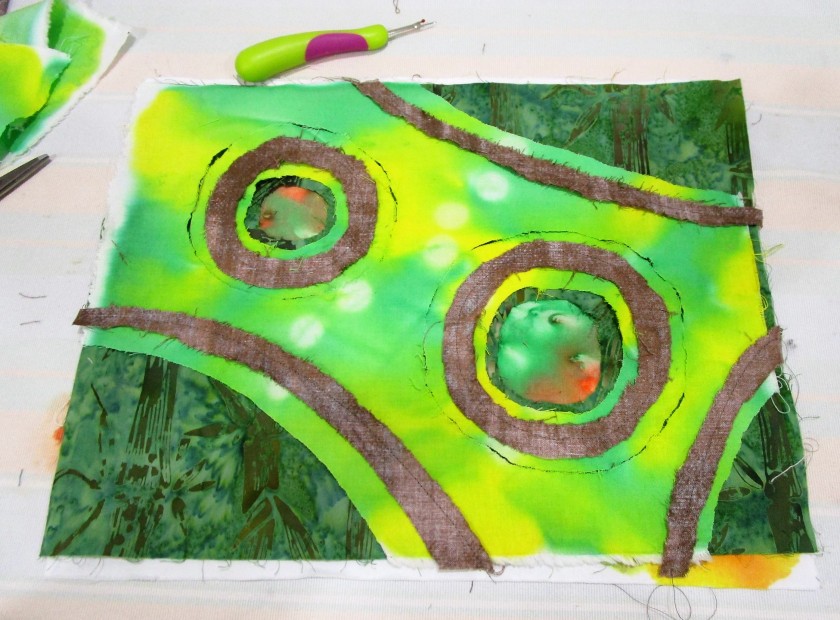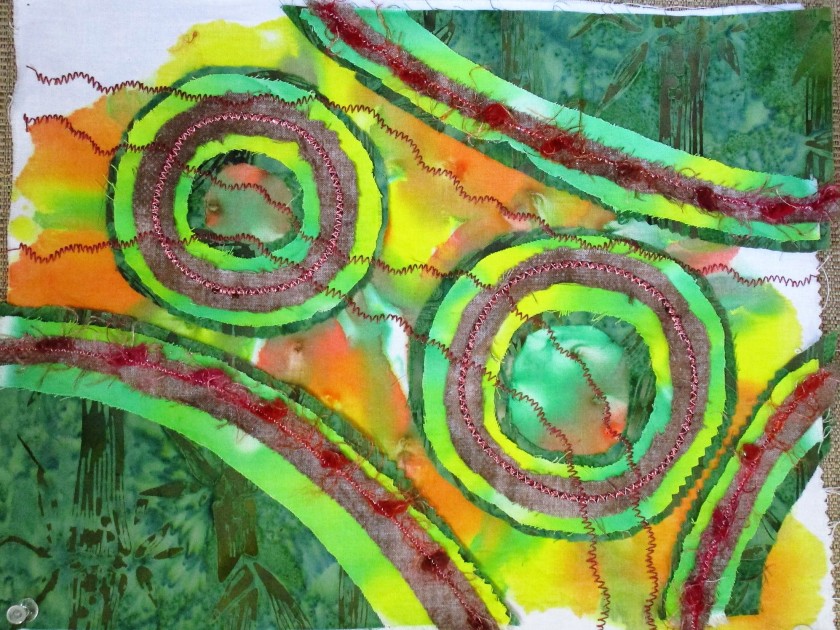Pieceful Wendy is our host for round 4. She has given us instructions that lend themselves very well to scrap-busting and improvisational piecing: Cut a square of fabric. Slice it in half in any direction. Cut a strip of another fabric. Sew the strip to the cut sides of the square. That’s it.
There is a pattern in my Japanese quilt block dictionary that references Boro stitching.
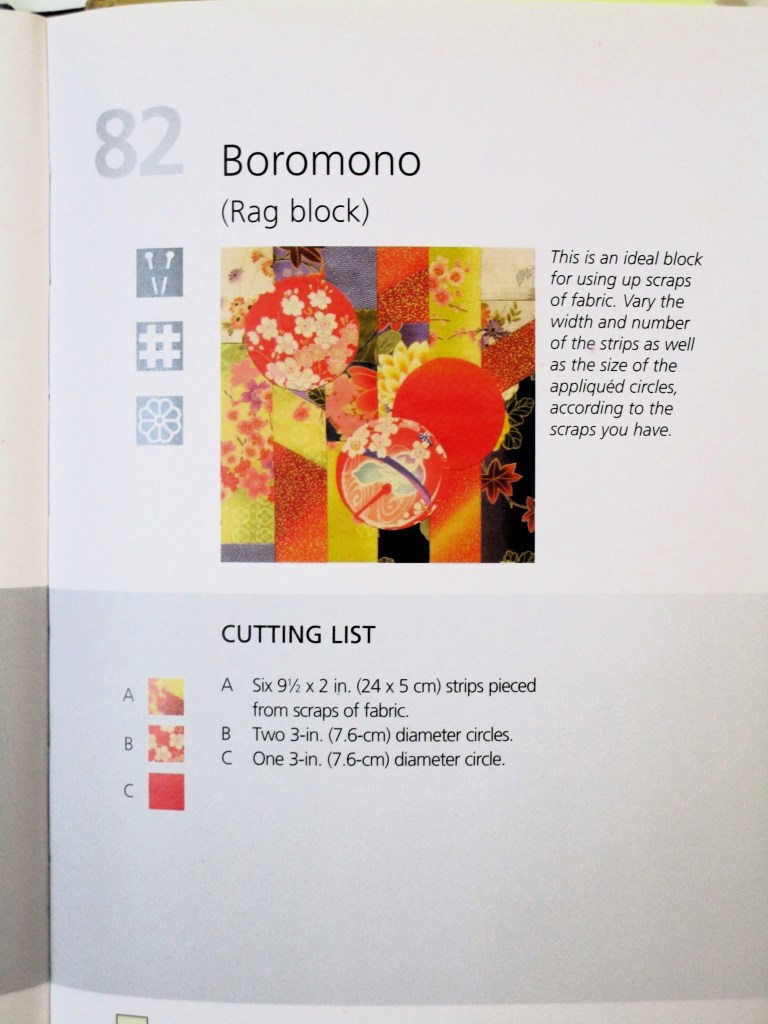
In Japanese sewing culture, boro refers to the technique of mending old clothes by sewing odd pieces of fabric over the worn places. It began out of necessity: in olden times, fabric was scarce and expensive, so each little piece was saved and used in the mending. In modern Japan, fabric is readily available and boro stitching is done just for the sheer pleasure of making things by hand.
To read my post about boro stitching, click here.
My blocks for Round 4 are not traditional boro. I was inspired by the idea of using scraps. I started by cutting many strips of dark fabrics.
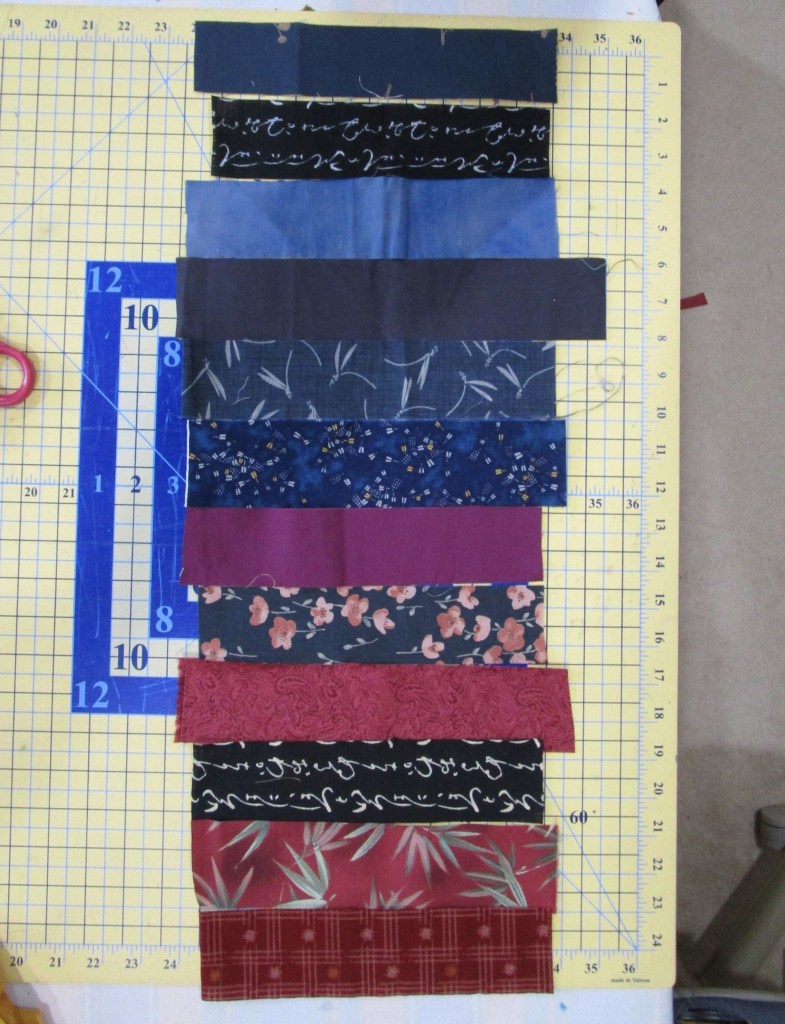
Then, following Wendy’s instructions, I slashed them.

Because I have chosen to use the color gold as a unifying element, I inserted strips of gold fabric, cut at around 1 and 1/4 inch wide. They finish out at 3/4 inch.
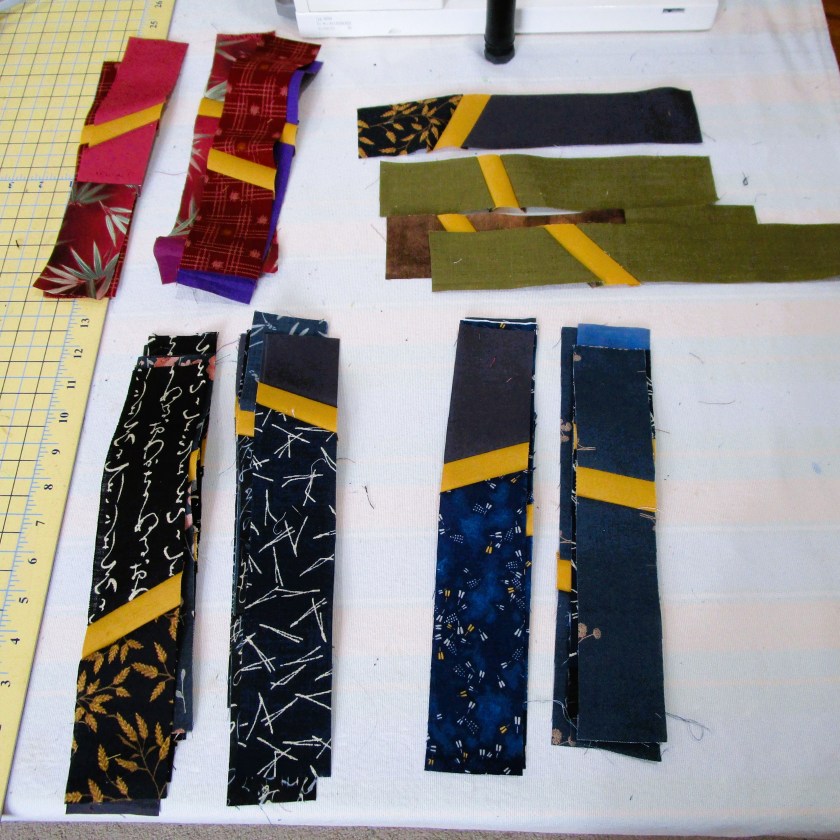
I sorted them into groups by color and direction of the insert. Then I stitched them together in three sections, to become the shoulder area of my kimono.

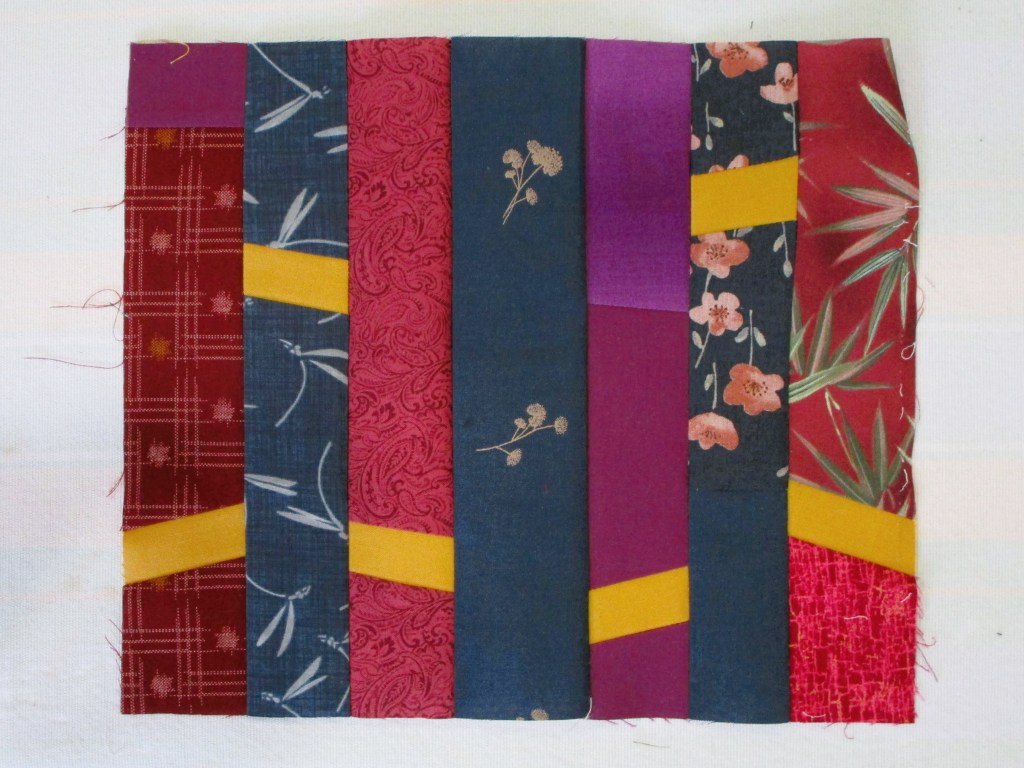
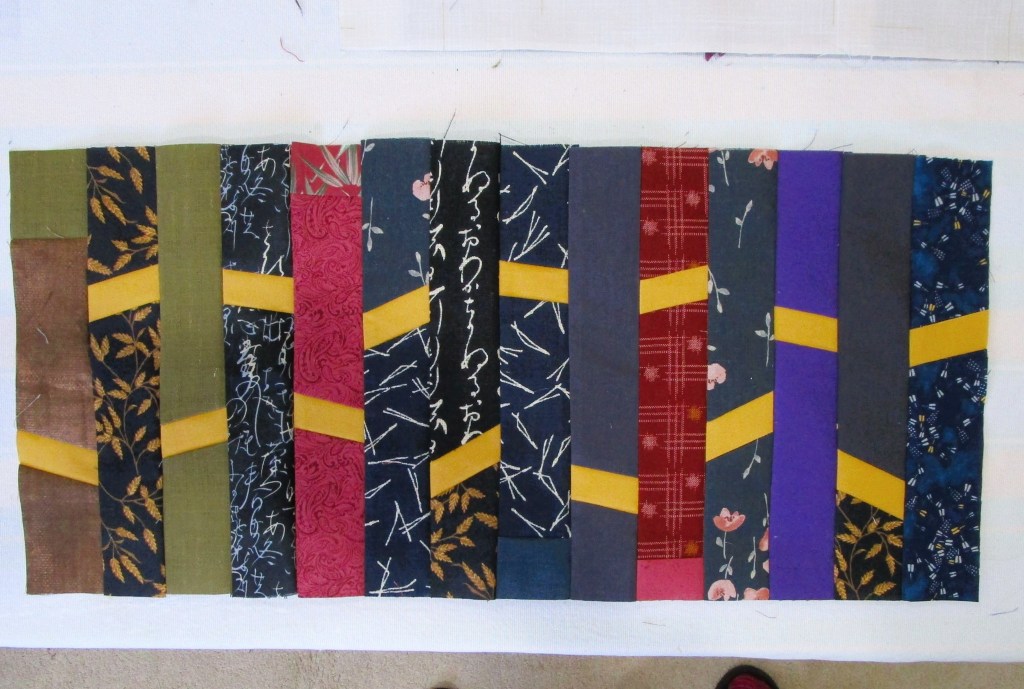
This ten-inch tall section will sit on the shoulder – 1/2 on the back of the garment and 1/2 on the front. Here is my quilt after adding the round four blocks:
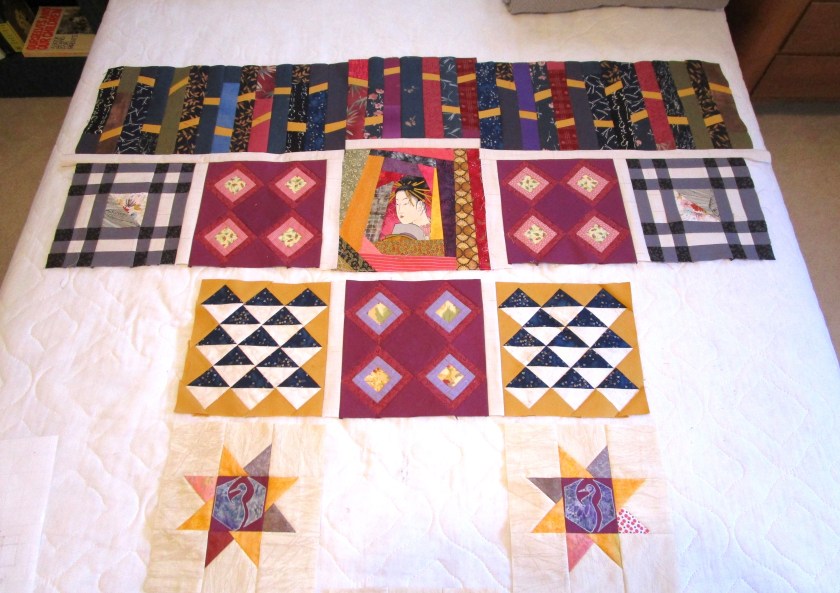
Even though the back is not quite done yet, my focus for the next two rounds will be to build the blocks for the kimono’s front.
I hope you are enjoying the quilty fun happening during the Stay at Home Round Robin challenge. To see others who are participating, enter the InLinz link found on Wendy’s Pieceful Thoughts site.
And here is the complete list of our hosts for SAHRR 2025 along with their blog sites.
- January 20: 1st Round: Kathleen @ Kathleen McMusing
- January 27: 2nd Round: Anja @ Anja Quilts
- February 3: 3rd Round: Gail @ Quilting Gail
- February 10: 4th Round: Wendy @ Pieceful Thoughts – Link up below!
- February 17: 5th Round: Brenda @ Songbird Designs
- February 24: 6th Round: Emily @ The Darling Dogwood
- March 24: Parade: showing all of your finished SAHRRs!














